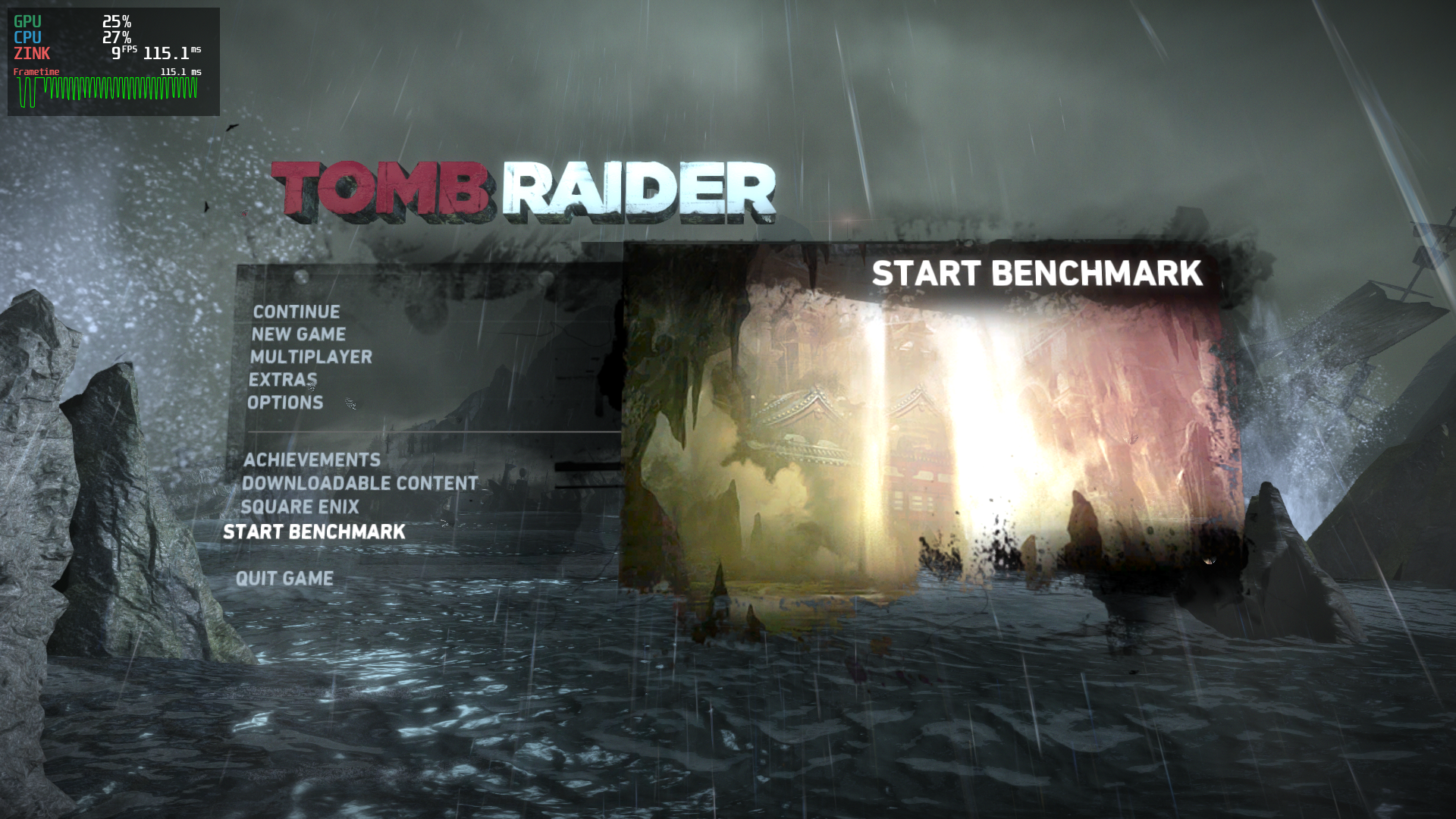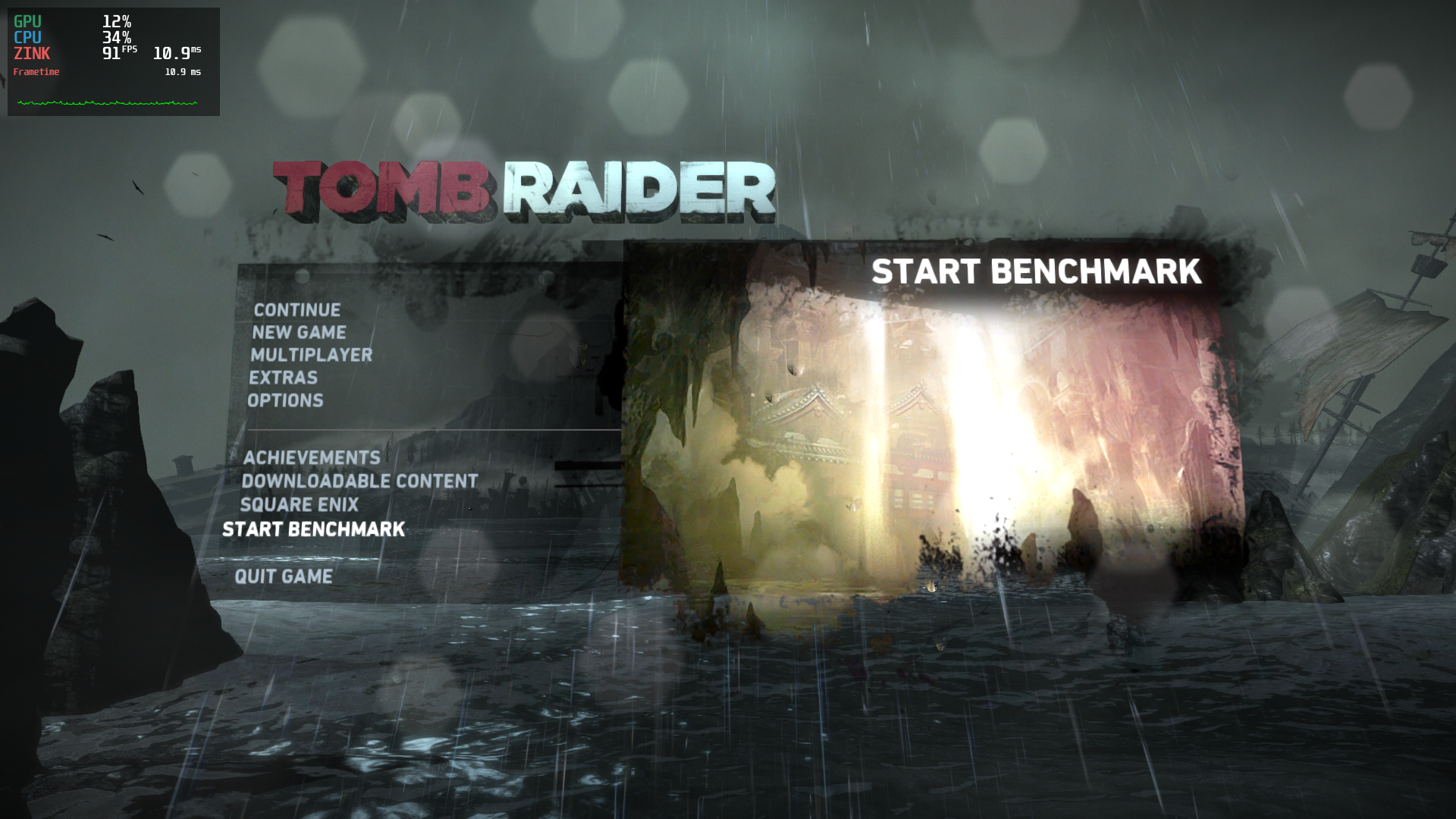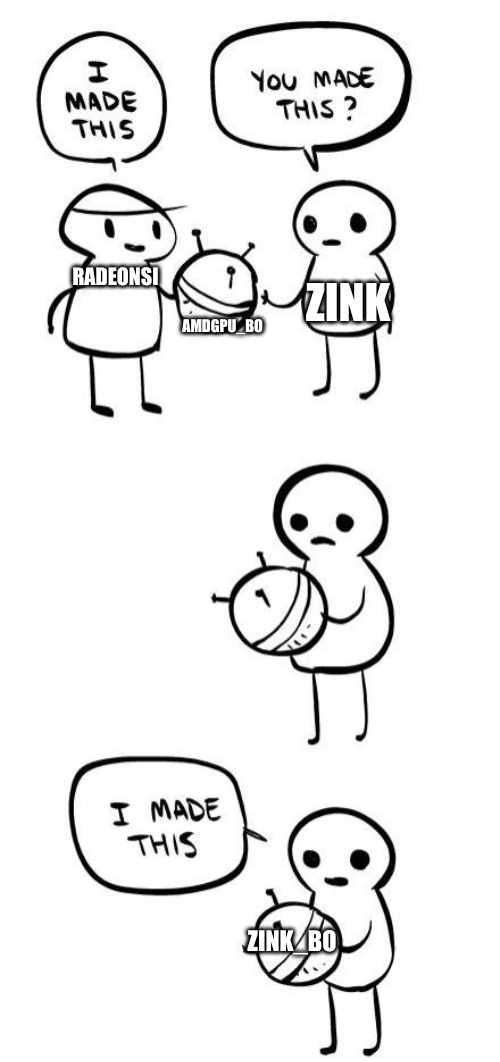Suballocate Me
I Said I Would
A long, long time ago in a month far, far away I said I was going to blog about some improvements I’d been working on for zink. I blogged about some of them, but one was conspicuously absent from the original list:
- make zink usable for gaming
There’s a lot that goes into this item. The post you’re reading now isn’t about to go so far as to claim that zink(-wip) is usable for gaming. No, that day is still far, far away. But this post is going to be the first step.
To begin with, a riddle: what change was made to zink between these two screenshots?
That’s right, I put the punchline in the title.
A suballocator.
What Is A Suballocator?
A suballocator is a mechanism by which small blocks of memory can be suballocated out of larger one. For example, if I want to allocate an 64byte chunk of memory, I could allocate it directly and get my block, or I could allocate a 4096byte chunk of memory and then take 64bytes out of it.
When performance is involved, it’s important to consider the time-cost of allocations, and so yes, it’s useful to have already allocated another 63 instances of 64bytes when I need a second one, but there’s another, deeper issue that’s also necessary to address, especially as it relates to gaming: 32bit environments.
In a 32bit process, the amount of address space available is limited to 4GB, regardless of how much actual memory is physically present, some of which is dedicated to system resources and unavailable for general use. Any time a buffer or image is mapped by the driver in a process, this uses up address space in order to create an addressable region of memory that can be read or written to. Once all the address space has been used up, no other resources can be mapped, and it becomes impossible to continue normal operations.
In short, the game crashes.
In Vulkan, and just generally in driver work, it’s important to keep allocation sizes aligned to the preference of the hardware for a given usage; this amounts to minMemoryMapAlignment, which is 4096bytes on many drivers. Similarly, vkGetBufferMemoryRequirements and vkGetImageMemoryRequirements return aligned memory sizes, so even if only 64bytes are needed, 4096bytes must still be allocated—4032 bytes unused. This ends up wasting tons of memory when an app is allocating lots of smaller regions, and it’s further wasting address space since Vulkan prohibits memory from being mapped multiple times, meaning that each 64byte buffer is wasting an additional 4032bytes of address space.
While 4k of memory may seem like a small amount, and why would anyone ever need more than 256kb memory anyway, these allocations all add up, fast enough that zink runs out of address space in a 32bit game like Tomb Raider within a couple minutes.
Playable?
Probably not.
The Solution, As Always
If you’re working in Mesa, you basically have two options when you come across a new problem: delete some code or copy some code. It’s not often that I come across an issue which can’t be resolved by one of the two.
In this case, I had known for quite a while that the solution was going to be copying some code. Thus I entered the realm of Gallium’s awesome auxilliary/pipebuffer, a fearsome component that had only been leveraged by one driver.
Yup, it was time to throw more galaxybrain.jpg code into the blender and see what came out. Ultimately, I was able to repurpose a lot of the core calculation code for sizing allocations, which saved me from having to do any kind of thinking or maffs. This let me cut down my suballocator implementation to a little under 700 lines, leaving much, much, much more space for bugsactivities.
At a high level, here’s an overview of aux/pb:
- call
pb_cache_initto set up a memory cache - initialize slab allocators with
pb_slabs_init - when allocating a new resource, determine if it can be slab allocated; if yes, use
pb_slab_allocto reuse/reclaim a slab allocation, otherwise manually allocate new memory - when destroying a resource, use
pb_reference_with_winsys
There’s more under the hood, but it mostly boils down to filling in the interface functions to manage detecting whether resources are busy or can be reclaimed for reuse. The actual caching/reclaiming/reusing are all handled by aux/pb, meaning I was free to go about breaking everything with all the leftover time that I had.
Cultured users of zink-wip can now enjoy massively improved performance (and have already been enjoying it for the past month) in many apps. The rest of you get to sit around and watch while I bang my head against CI while ajax showers me with memes.


